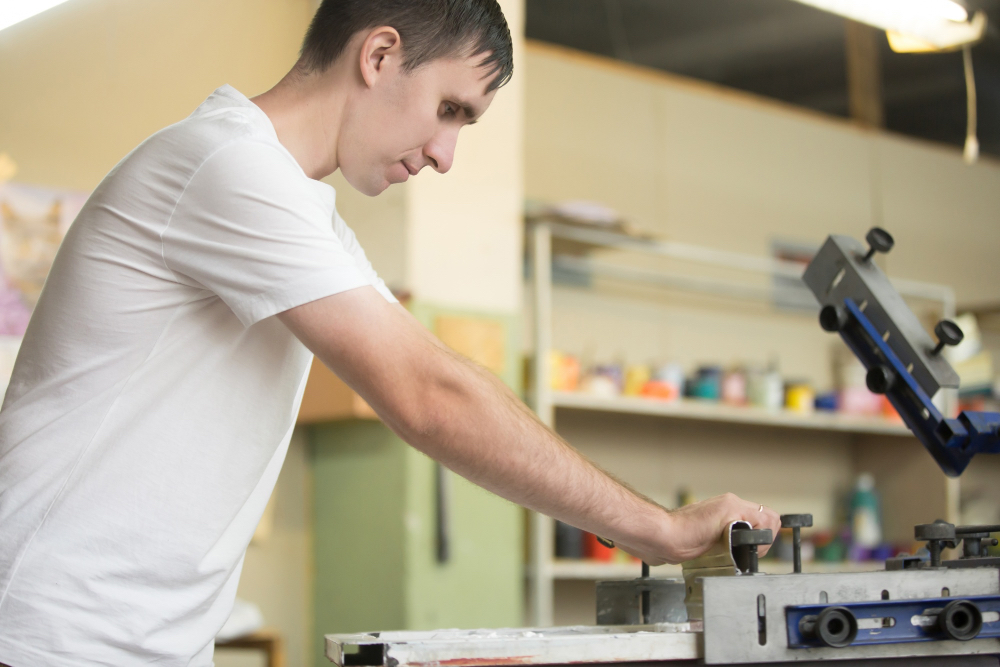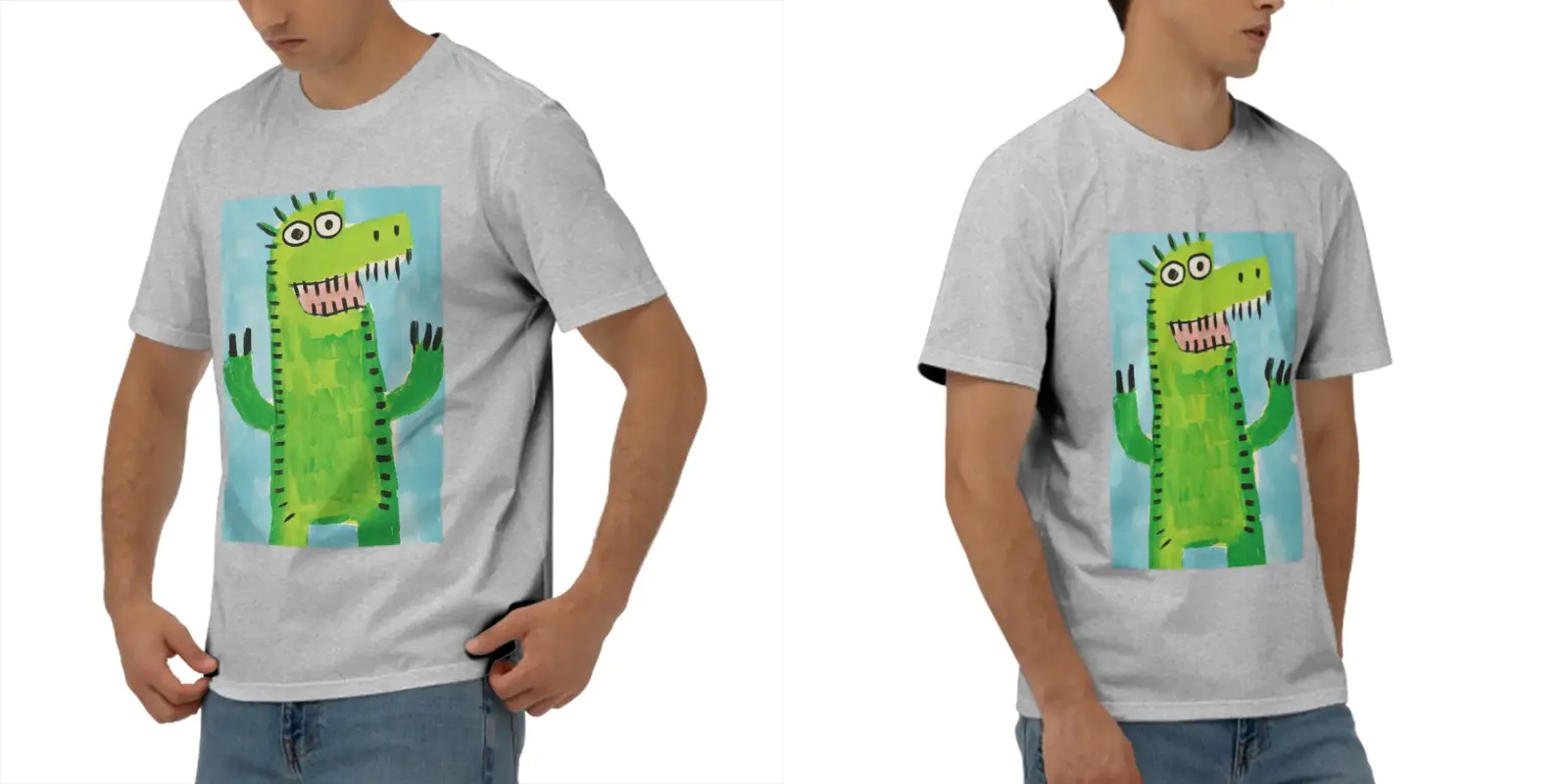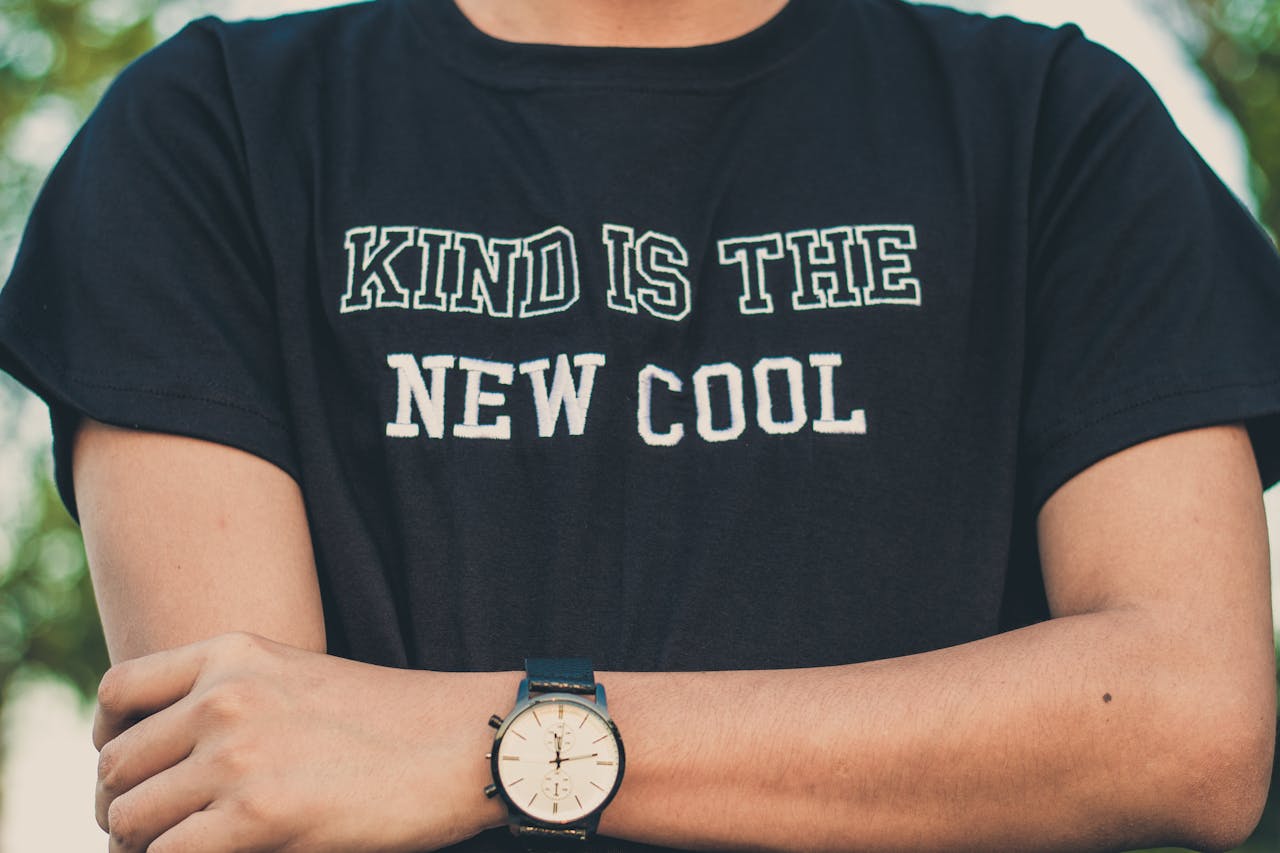A stylish t-shirt can be a game changer for your wardrobe. But the way your design is printed matters just as much as the design itself. Different printing methods affect how your tee looks, feels, and lasts.
In this guide, we’ll explore 8 of the best t-shirt printing techniques that combine quality and style. Whether you want bold colors or soft prints, big batches or small runs, you’ll find the right method to bring your fashion ideas to life.
8 Best Methods for Printing T Shirts
Print on Demand
Print on demand services let you print fashion designs only after an order is placed. Most POD providers use DTG or similar printing methods, making it easy for small brands, designers, or fashion enthusiasts to create and sell custom apparel without needing to hold inventory.
As a form of printing on demand, it offers great freedom in testing fashion ideas, though it may come with lower profit margins and limited quality control.
Pros:
- No upfront inventory
- Easy to start online
- Good for custom and niche designs
Cons:
- Lower profit margins
- Less control over print quality and shipping
Direct-to-Garment (DTG)
Direct-to-garment printing uses a specialized inkjet printer to apply ink straight onto the t-shirt. It allows for full-color designs and works well for detailed images.
This is a great option for small runs or even single shirts, especially if your design has lots of color or fine details. However, it may not hold up as long as screen printing over many washes.
Pros:
- Good for complex and colorful designs
- No setup time; great for one-offs
- Works on cotton and cotton-blend fabrics
Print On Demand Men’s Combed Cotton Short-Sleeved T-Shirt
Cons:
- Slower printing time for bulk orders
- Print may fade faster with regular washing
Screen Printing
Screen printing is one of the oldest and most popular t-shirt printing methods. It works by pushing ink through a mesh screen onto the fabric. Each color in the design needs a separate screen, which means it’s best for simple graphics with few colors.
This method delivers vibrant, long-lasting prints that hold up well on fashion basics like graphic tees or branded merchandise. Due to the setup time, it’s best suited for larger orders such as seasonal collections or event apparel.
Pros:
- Colors come out strong and vibrant
- Great for large orders
- Designs last through many washes
Cons:
- Not cost-effective for small batches
- Limited color detail and not ideal for photo prints
Heat Transfer Printing
This method prints designs on special transfer paper and applies them to fabric with heat and pressure. It’s a simple way to produce fashion pieces at home or in small batches. Heat transfer works well for vibrant photos or custom graphics often seen in trendy streetwear.
While accessible and affordable, prints might crack or peel over time, so careful washing is essential to keep your stylish looks fresh.
Pros:
- Easy to learn and do at home
- Works with many types of images and photos
- Affordable setup cost
Cons:
- Not as durable as other methods
- Can feel stiff or plastic-like
Vinyl Cutting
Vinyl cutting involves cutting out designs from colored vinyl sheets and then heat pressing them onto the shirt. Each color is layered individually.
It’s a good option for simple, bold graphics like text or logos. However, it’s not the best method for detailed or multi-colored images.
Pros:
- Great for bold text and graphics
- Durable and doesn’t fade easily
- Good for small runs and custom names
Cons:
- Not ideal for complex designs
- Can feel thick or heavy on the shirt
Dye Sublimation
Dye sublimation turns dye into gas that bonds with polyester fibers, creating soft, all-over prints that don’t fade or crack. This technique is excellent for fashion-forward pieces like performance wear or bold statement tees, where vibrant, full-coverage designs stand out.
Pros:
- Long-lasting, vibrant colors
- No texture on the fabric
- Ideal for full-coverage prints
Cons:
- Only works on polyester
- Limited to light-colored garments
Custom Men’s Short-Sleeve Button-Down Shirt – Print on Demand Fulfillment
Discharge Printing
Discharge printing removes the fabric’s dye chemically to reveal the original color or add new pigments. This results in a soft, vintage-style look that is popular in retro fashion and high-end cotton tees.
It works best on dark cotton fabrics, delivering a smooth, no-feel print that feels like part of the garment.
Pros:
- Very soft, no-feel print
- Good for vintage or faded looks
- Ideal for dark cotton shirts
Cons:
- Limited color options
- Can be inconsistent with some dyes
Plastisol Transfers
This is similar to screen printing, but the design is first printed onto a special transfer paper using plastisol ink. Then it’s heat pressed onto the shirt.
It combines the quality of screen printing with the convenience of heat pressing. Great for storing prints ahead of time and applying them as needed.
Pros:
- High-quality results
- Can be stored and used later
- Good for detailed graphics
Cons:
- Requires a heat press
- Not as eco-friendly due to plastisol inks
Which Type of T-Shirt Printing Should You Choose?
Consider Your Design Complexity
Choosing the right printing method starts with the kind of design you have. If your design is colorful and detailed, Direct-to-Garment (DTG) or dye sublimation can capture all the fine elements without losing quality. For simpler, fewer-color designs, methods like screen printing or vinyl cutting work great by creating bold and clear images.
Think About Your Order Size
How many shirts you want to print matters a lot. If you’re ordering in large quantities, screen printing is usually the most cost-effective option because setup costs spread out over many shirts. For smaller runs or single shirts, DTG or print-on-demand are better since they require little setup and no minimum orders. This makes them perfect for testing designs or selling custom pieces.
Match Printing to Fabric Type
Different printing methods work better with certain fabrics. For example, dye sublimation works best on polyester or light-colored shirts, while discharge printing fits dark cotton shirts perfectly. Using the wrong method on the wrong fabric can make your design look faded or feel rough.
Focus on Durability and Feel
How long your design lasts also influences your choice. Screen printing and vinyl cutting create prints that handle many washes and stay vibrant. DTG prints look great but might fade faster if not cared for. Heat transfers are less durable and may crack or peel with time.
Conclusion
Choosing the perfect t-shirt printing method really comes down to your style and goals. Consider the fabric, how many shirts you need, and how long you want your design to stay fresh.
If you prefer flexibility and low risk, print-on-demand lets you create without stocking up. There’s no one-size-fits-all solution—finding the right method means your tees will not only look stylish but also feel just right for you.




